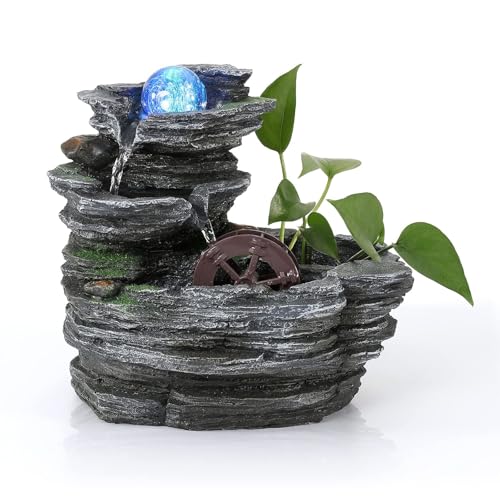Imagine stepping into your backyard and being greeted by a vibrant display of plants that thrive naturally in your area. I’ve discovered that native plants not only enhance the beauty of my yard but also offer a host of benefits I hadn’t considered before.

By choosing plants native to my region, I’m supporting local wildlife, conserving water, and reducing the need for excessive maintenance. These plants are adapted to the local climate, which means they require less care and are more resilient against pests and diseases. It’s amazing how they contribute to a sustainable and harmonious environment right at home.
Embracing native plants has transformed my gardening experience, making it more enjoyable and eco-friendly. From attracting butterflies to improving soil health, the advantages are numerous. Let me share why incorporating native plants into your yard is a game-changer for both your garden and the ecosystem.
Environmental Benefits
Native plants offer significant environmental advantages that enhance the health of your yard and the surrounding ecosystem. They contribute to a balanced environment by interacting harmoniously with local flora and fauna.
Supports Local Wildlife
Native plants provide essential habitat and food sources for local wildlife. Birds, butterflies, and beneficial insects rely on these plants for nectar, shelter, and breeding grounds. For example, milkweed attracts monarch butterflies, while oak trees support various bird species. By cultivating native flora, I create a thriving ecosystem that sustains biodiversity in my yard.
Conserves Water
Native plants are adapted to the local climate, requiring less water than non-native species. Their deep root systems efficiently access groundwater, reducing the need for frequent watering. On average, gardens with native plants can use up to 50% less water. This conservation not only lowers water bills but also minimizes the strain on local water resources, making my yard more sustainable.
Aesthetic Advantages
Natural Beauty and Diversity
- Variety of Species: Native gardens feature diverse plant species, each displaying unique colors and forms.
- Harmonious Integration: These plants blend smoothly with the local landscape, creating a unified and attractive setting.
- Unique Textures: From the rugged bark of native trees to the soft petals of wildflowers, varying textures add visual interest.
Seasonal Interest
- Year-Round Appeal: Native plants provide beauty in every season with their distinct blooming periods and foliage changes.
- Vibrant Blooms: Many native flowers bloom at different times, ensuring continuous color throughout the year.
- Autumn Foliage: Native shrubs and trees often showcase brilliant color shifts in the fall, enhancing the garden’s warmth.
Cost Effectiveness
Native plants provide significant financial benefits by lowering maintenance costs and conserving resources.
Low Maintenance Needs
I find native plants require minimal upkeep since they’re adapted to local soil and climate. They reduce the need for chemical pesticides and fertilizers, cutting my gardening expenses. Additionally, their resistance to local pests and diseases minimizes the need for frequent treatments and plant replacements.
Reduced Resource Use
Native plants substantially decrease resource consumption, leading to cost savings. Here’s how:
| Resource | Native Plants Usage | Non-Native Plants Usage |
|---|---|---|
| Water | Up to 50% less | Higher |
| Fertilizers | Minimal | Frequent |
| Pesticides | Rarely needed | Regularly required |
By lowering water bills and minimizing the need for fertilizers and pesticides, native plants enhance my garden’s cost effectiveness.
Sustainable Gardening Practices
Implementing native plants enhances sustainable gardening by reducing resource usage and promoting ecological balance.
Water Conservation
Native plants use up to 50% less water than non-native species. They thrive in local rainfall patterns, minimizing the need for supplemental irrigation. For example, California poppies and lavender require minimal watering once established.
Soil Health
Native plants improve soil structure and fertility. Their deep root systems prevent erosion and increase soil aeration. Additionally, legumes like native clover fix nitrogen, enriching the soil naturally.
Pest Management
Using native plants reduces the reliance on chemical pesticides. These plants are adapted to local pests, which helps maintain a balanced ecosystem. Beneficial insects, such as ladybugs and native bees, thrive alongside native flora, controlling pest populations naturally.
Biodiversity Support
Native gardens support diverse wildlife by providing essential habitats and food sources. Birds, butterflies, and other pollinators rely on native plants for nectar and shelter. Incorporating species like the milkweed and serviceberry attracts a variety of beneficial organisms.
Energy Efficiency
Maintaining a garden with native plants requires less energy. Reduced need for mowing, fertilizing, and watering lowers the overall energy consumption. This efficiency contributes to a lower carbon footprint for your yard.
Waste Reduction
Native gardens generate less waste from plant replacements and chemical treatments. Plants suited to the local environment establish quickly and remain healthy with minimal intervention, decreasing the volume of gardening waste over time.
| Practice | Benefit | Example Species |
|---|---|---|
| Water Conservation | Uses up to 50% less water | California poppies, Lavender |
| Soil Health | Prevents erosion, enriches soil | Native clover, Milkweed |
| Pest Management | Reduces need for chemical pesticides | Ladybugs, Native bees |
| Biodiversity Support | Provides habitat and food for wildlife | Serviceberry, Butterfly bush |
| Energy Efficiency | Lowers energy consumption | Evergreen shrubs, Native grasses |
| Waste Reduction | Decreases gardening waste | Perennials, Native trees |
By integrating these sustainable practices, native plant gardening fosters a resilient and eco-friendly yard.
Health And Well-Being Benefits
Integrating native plants into my yard enhances air quality by absorbing pollutants and releasing oxygen. Studies show that native vegetation can reduce airborne toxins by up to 30%, creating a healthier environment for my family.
« Sustainable Landscaping Practices to Adopt for a Greener, Healthier Garden
Spending time gardening with native plants lowers stress levels and boosts my mood. Research indicates that exposure to nature decreases cortisol levels, promoting relaxation and mental clarity.
Native gardens attract beneficial insects and birds, fostering a sense of connection with the local ecosystem. Observing wildlife in my yard provides daily moments of joy and supports emotional well-being.
Growing native plants encourages physical activity, from planting to maintenance. Regular gardening helps improve my physical fitness, offering low-impact exercise that strengthens muscles and increases flexibility.
Overall, native plants contribute significantly to my health and well-being by creating a cleaner, more serene, and active outdoor space.
Conclusion
Embracing native plants has truly transformed my yard into a vibrant and thriving space. It’s rewarding to see how these plants effortlessly blend beauty with sustainability. I love knowing that my garden supports local wildlife and conserves water without constant upkeep.
Choosing native species has made gardening more enjoyable and less stressful for me. It feels great to contribute to a healthier environment while enjoying a stunning and resilient landscape. If you’re looking to enhance your yard with minimal effort and maximum benefits native plants are definitely worth considering. Give them a try and experience the difference they can make in your outdoor space.
















